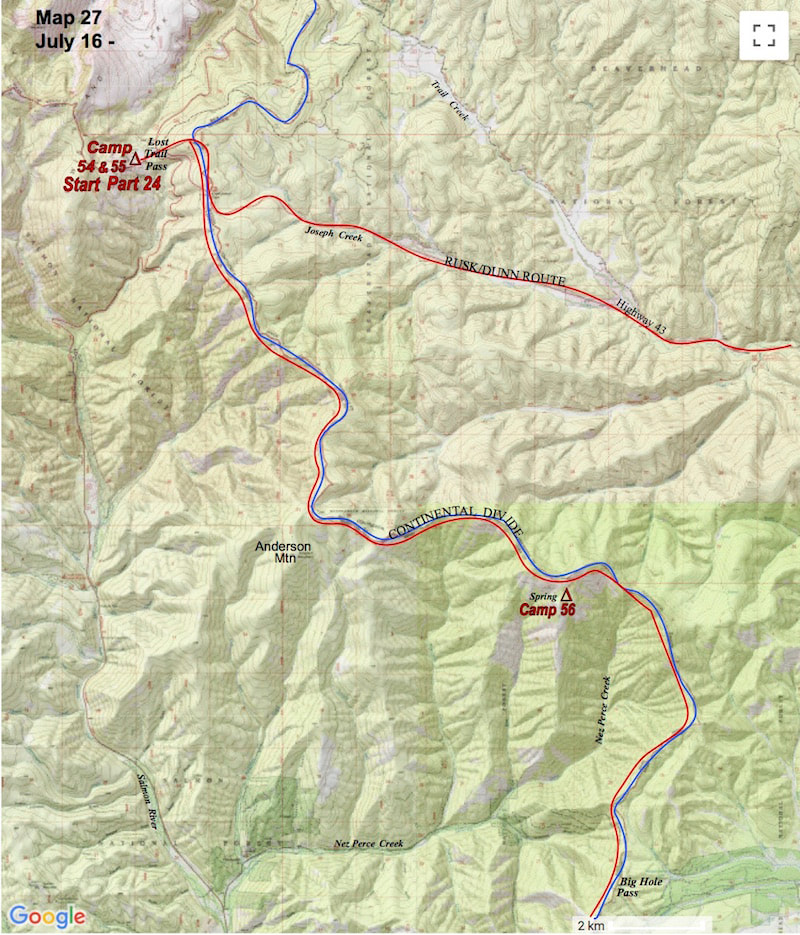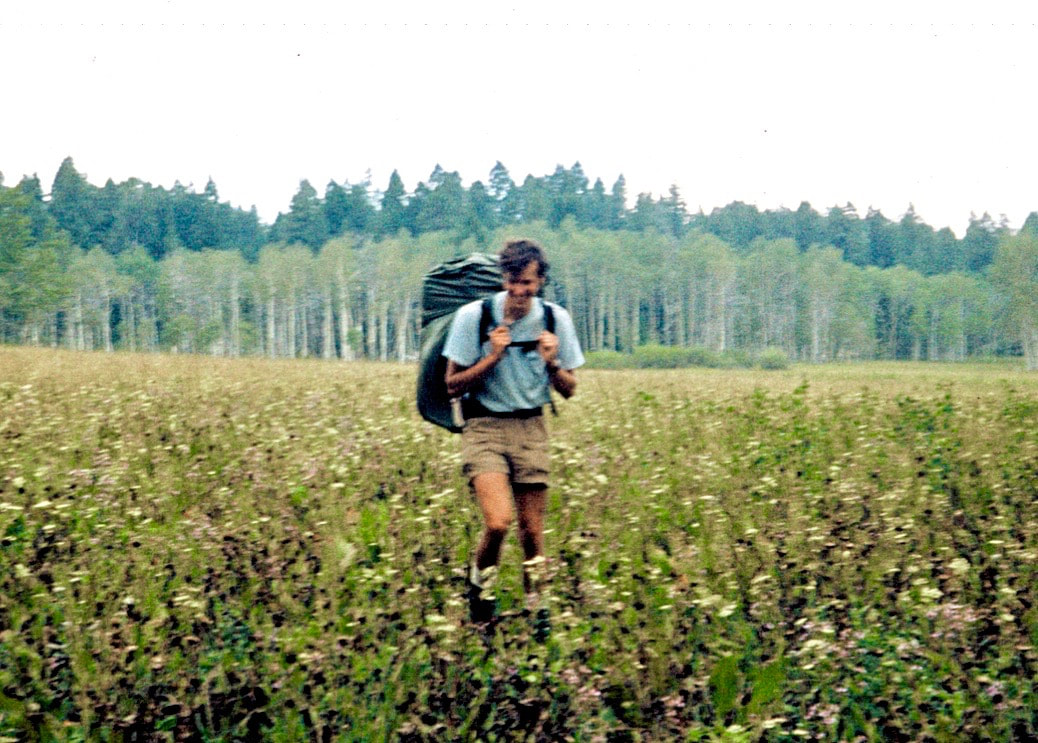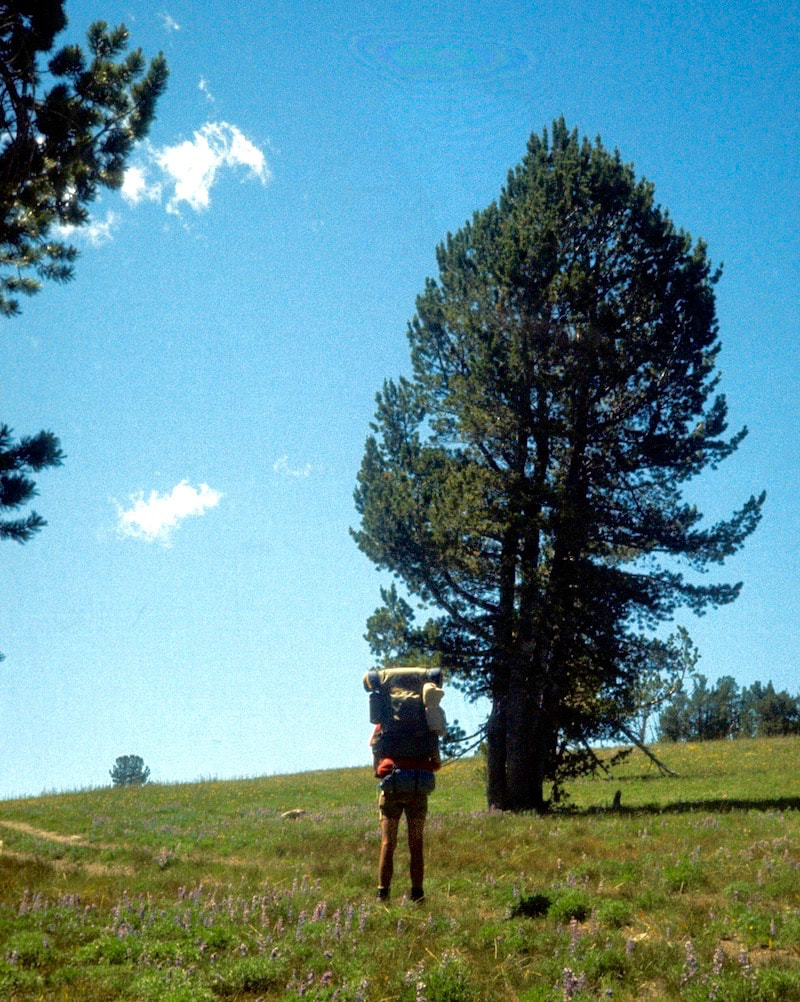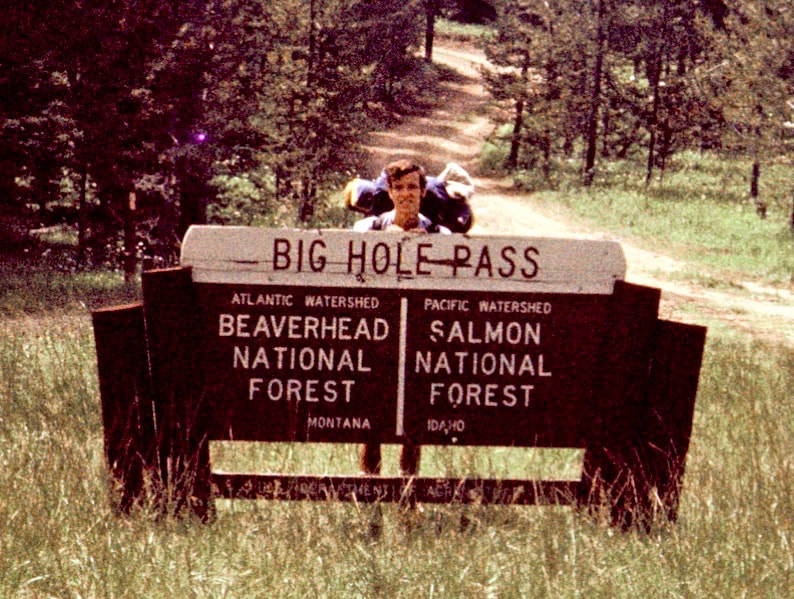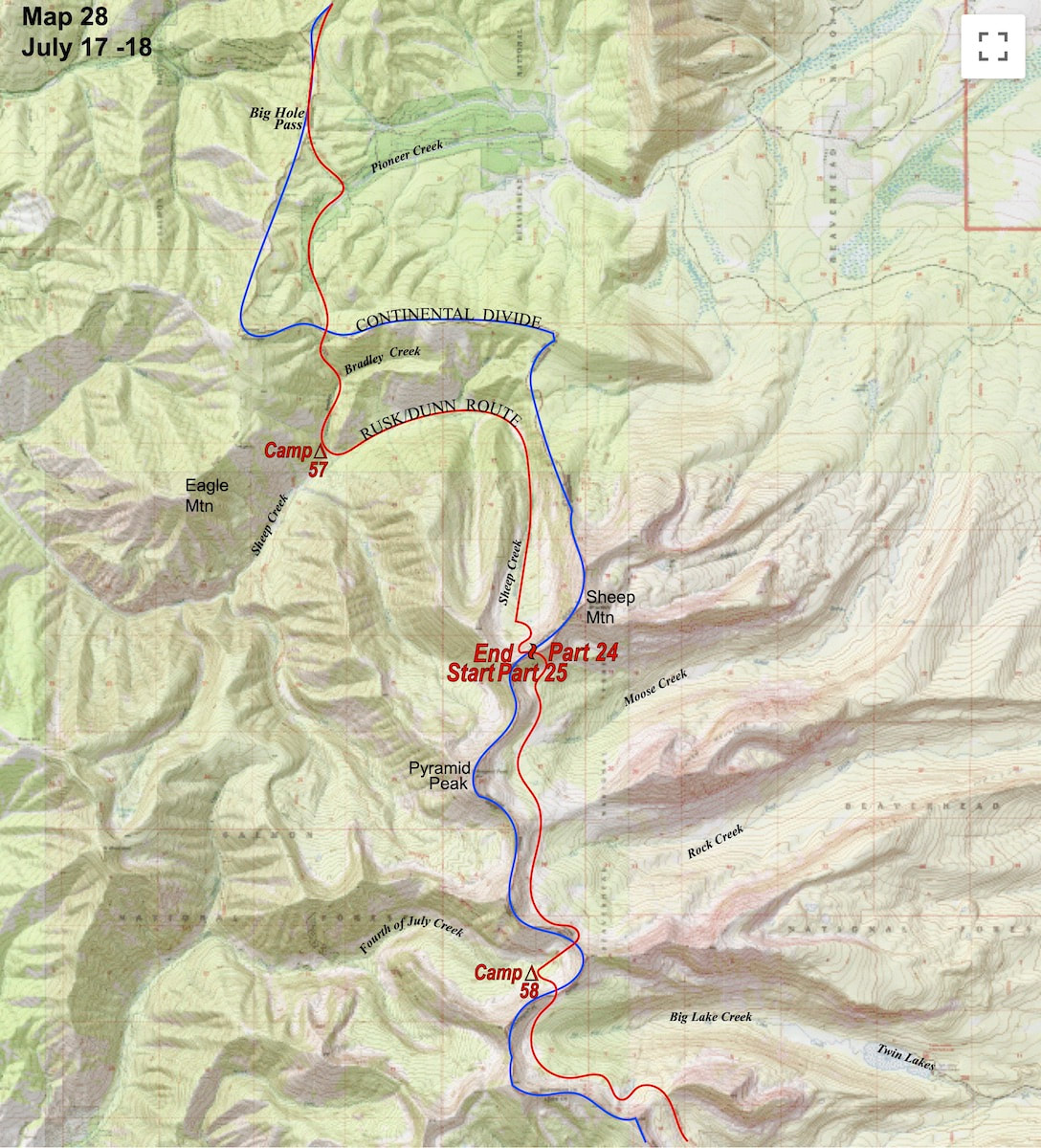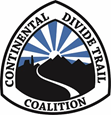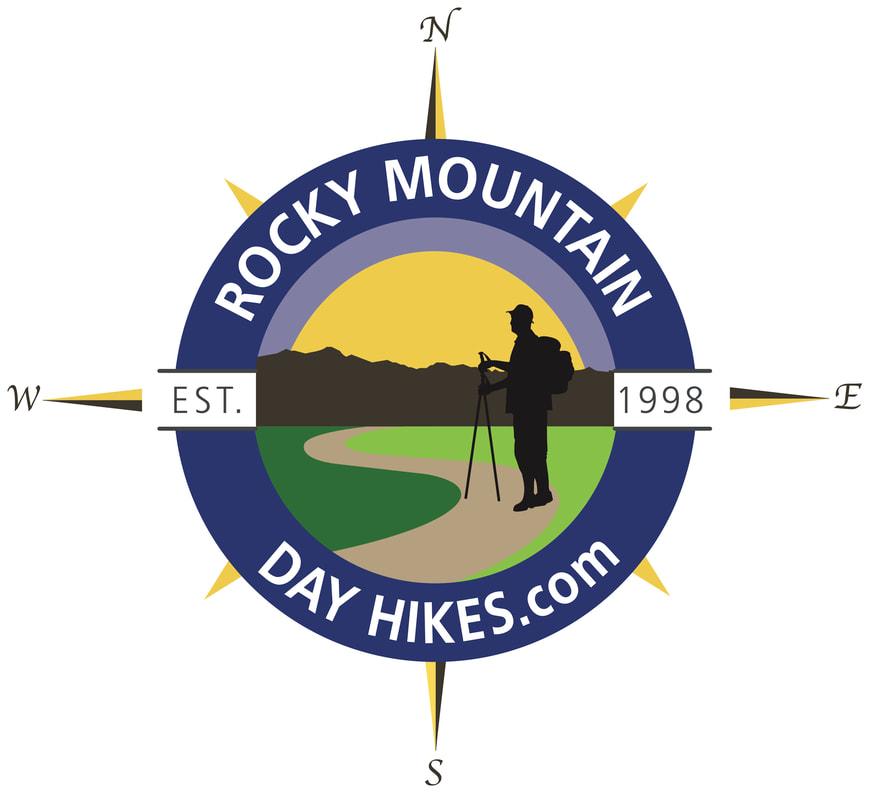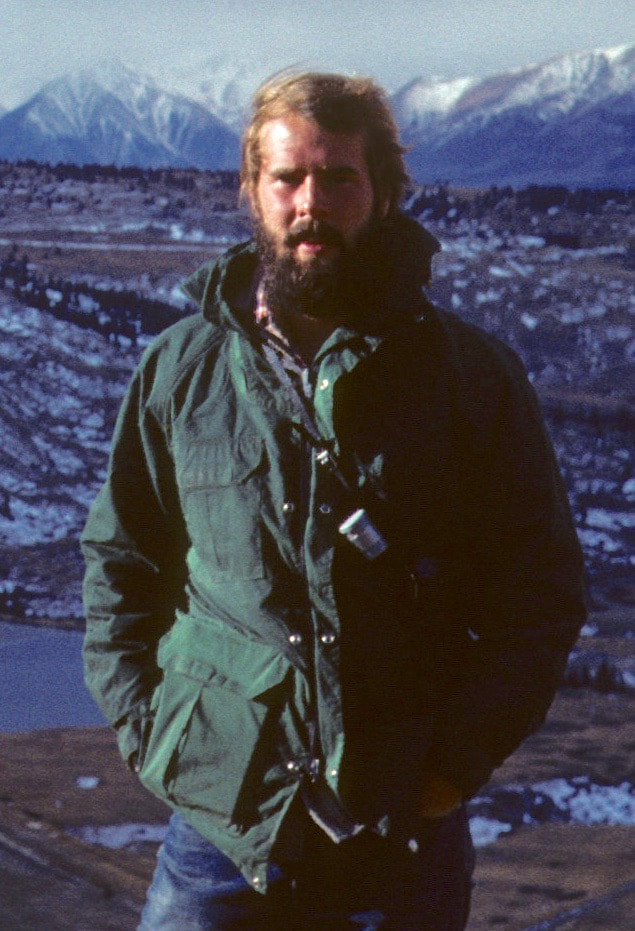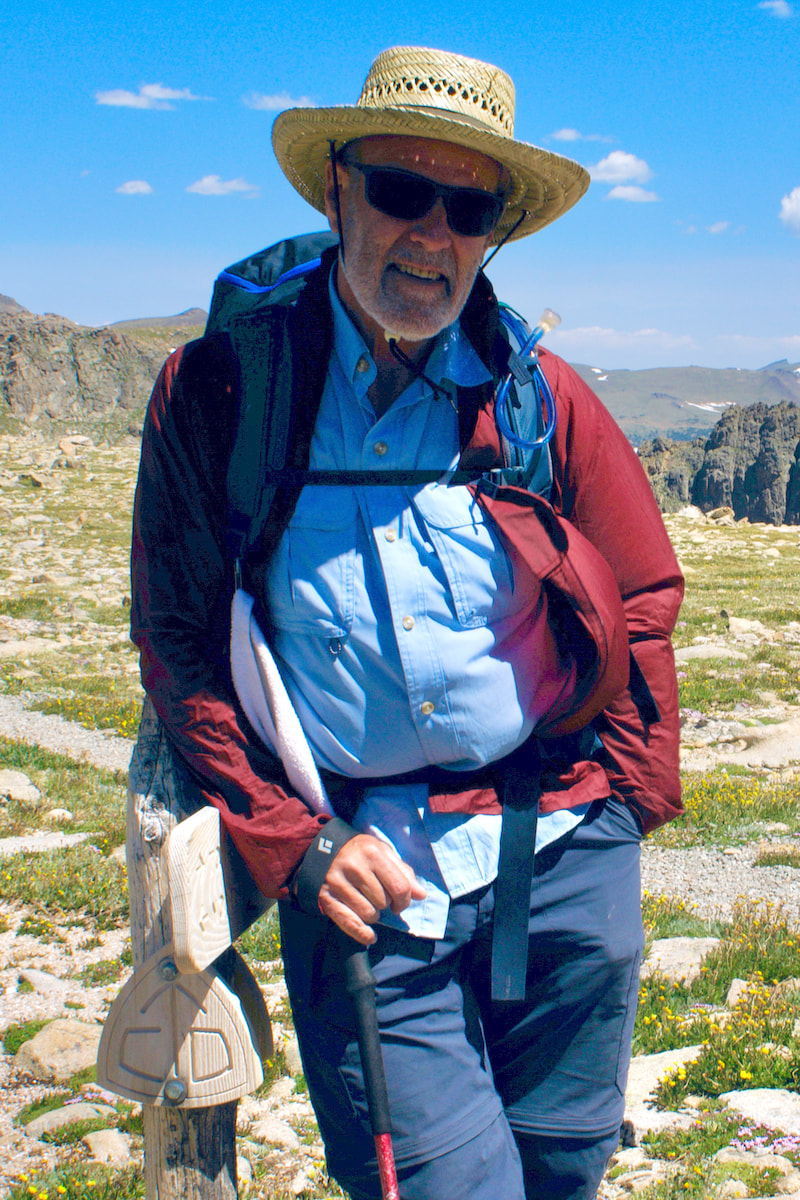The Continental
|
|
July 17 – 19 Salmon NF, Idaho (Go to Pt 1) Truck mufflers and slamming car doors at the Lost Trail Pass pullover rousted us out early the next morning. We rolled into our usual a.m. routine, packed up camp and hiked up a long, steep hill to rejoin the Continental Divide.
Finally, we climbed again in elevation and at the top of this rise the trees broke away into a vast, alpine meadow that emptied out to a staggering panorama of the southern Bitterroot Range. We stood and stared out over a hundred miles of southern Montana mountains, all of which we would eventually pass through.
The next day we carried on along the ridgeline with our trail from the day before maintaining true to the ridge, circling the Nez Perce basin and bringing us out to Big Hole Pass by early afternoon. From Big Hole, the trail dropped into the Pioneer Creek Valley then climbed back up to a shallow saddle before again plunging steeply to Bradley Creek. We followed Bradley Creek down to Sheep Creek and set camp on a rocky hillside in a steep gorge because we were too spent to go any further. It was during supper that evening, as thunder rumbled off in the distance, that we debated whether or not a sudden and violent downpour of rain could possibly flash-flood our camp down river. After another, more thorough survey of our position relative to the river, we were both pretty convinced our camp was out of danger but then again, we had witnessed some fairly biblical rainstorms and the far off flashes of lightning had me a little on edge as I zipped into my sleeping bag for the night. Just as I had feared, rain moved in during the mid-night hours which then had me awake trying to calculate just how much water run-off in the gorge might be accumulating based on the pitter-patter on the tent fly and then I would listen to the sound of the river below our camp for any audible sounds of increased fluctuation. I lost a lot of sleep fretting in the dark about flash floods but by morning the sporadic nighttime rains had turned out to be nothing but wet.
We began traversing the talus up the ever steeping slope until finally, about 300 yards from the top of the ridge, the angle became so steep and the loose rocks so hazardous that we came to a halt. Teetering high on the loose rock slope we were a bit flummoxed as to what to do next, the traverse had become so precarious that it seemed foolhardy to continue that way but I was reluctant to give up the hard earned elevation we’d gained if we retreated back down the slope to look for another route. I looked up and the ridge-crest appeared tantalizingly close.
I ventured further up into gully, finding hand holds on the rock before advancing my feet, which skated out from under me several times, sending rock debris airborne before it careened its way off to the debris pile at the bottom of the face. Moving higher up, the trough continued to steepen and the climbing got exhausting, burning away at my calf muscles with almost no place to stop and rest. At the top, everything came to a head with the trough boxing out, leaving only steep rock to contend with. It was about 100 feet of forth-class climbing and with my load threatening to pull me off backwards every move had to be executed with forethought as to how the pack was going to affect my balance. All of the handholds and footholds were prominent and easy to reach and I got completely absorbed in the movement required to advance up the rock.
We walked the few paces there were across the top of the ridge and looked down the other side. Steep, shattered rock littered the cirque wall all down the south side face and it appeared to be a mirror image of what we had just come up, which was the last thing I wanted to see but it was either this or go back the way we’d just come. Before we committed to the descent we dropped our packs and pulled out the lunch bag. We didn’t talk much about how we were going descend and after picking through our lunch ration for the day there was really nothing left to do but to start plunge-stepping down the steep scree to the splintered rocks below.
0 Comments
Leave a Reply. |
Kip RuskIn 1977, Kip Rusk walked a route along the Continental Divide from Canada to Mexico. His nine month journey is one of the first, documented traverses of the US Continental Divide. Montana Part 1 - Glacier Ntl Pk Part 2 - May 11 Part 3 - May 15 Part 4 - May 19 Part 5 - May 21 Part 6 - May 24 Part 7 - May 26 Part 8 - June 2 Part 9 - June 5 Part 10 - June 7 Part 11 - June 8 Part 12 - June 11 Part 13 - June 12 Part 14 - June 15 Part 15 - June 19 Part 16 - June 23 Part 17 - June 25 Part 18 - June 27 Part 19 - June 30 Part 20 - July 5-6 Part 21 - July 7-8 Part 22 - July 9-10 Part 23 - July 11-15 Part 24 - July 17-18 Part 25 - July 18-19 Part 26 - July 19 Part 27 - July 20-21 Part 28 - July 22-23 Part 29 - July 24-26 Part 30 - July 26-30 Part 31 - July 31-Aug 1 Part 32 - Aug 1-4 Part 33 - Aug 4-6 Part 34 - Aug 6 Part 35 - Aug 7-9 Part 36 - Aug 9-10 Part 37 - Aug 10-13 Wyoming Part 38 - Aug 14 Part 39 - Aug 15-16 Part 40 - Aug 16-18 Part 41 - Aug 19-21 Part 42 - Aug 20-22 Part 43 - Aug 23-25 Part 44 - Aug 26-28 Part 45 - Aug 28-29 Part 46 - Aug 29-31 Part 47 - Sept 1-3 Part 48 - Sept 4-5 Part 49 - Sept 5-6 Part 50 - Sept 6-7 Part 51 - Sept 8-10 Part 52 - Sept 11-13 Part 53 - Sept 13-16 Part 54 - Sept 17-19 Part 55 --Sept 19-21 Part 56 Sept 21-23 Part 57 - Sept 23-25 Part 58 - Sept 26-26 Colorado Part 59 - Sept 26 Part 60 - Sept 30-Oct 3 Part 61 - Oct 3 Part 62 - Oct 4-6 Part 63 - Oct 6-7 Part 64 - Oct 8-10 Part 65 - Oct 10-12 Part 66 - Oct 11-13 Part 67 - Oct 13-15 Part 68 - Oct 15-19 Part 69 - Oct 21-23 Part 70 - Oct 23-28 Part 71 - Oct 27-Nov 3 Part 72 - Nov 3-5 Part 73 - Nov 6-8 Part 74 - Nov 9-17 Part 75 - Nov 19-20 Part 76 - Nov 21-26 Part 77 - Nov 26-30 Part 78 - Dec 1-3 New Mexico Part 79 - Dec 3-7 Part 80 - Dec 8-11 Part 81 - Dec 12-14 Part 82 - Dec 14-22 Part 83 - Dec 23-28 Part 84 - Dec 28-31 Part 85 - Dec 31-Jan2 Part 86 - Jan 2-6 Part 87 - Jan 6-12 Part 88 - Jan 12-13 Part 89 - Jan 13-16 Part 90 - Jan 16-17 Part 91 - Jan 17 End |
© Copyright 2025 Barefoot Publications, All Rights Reserved

